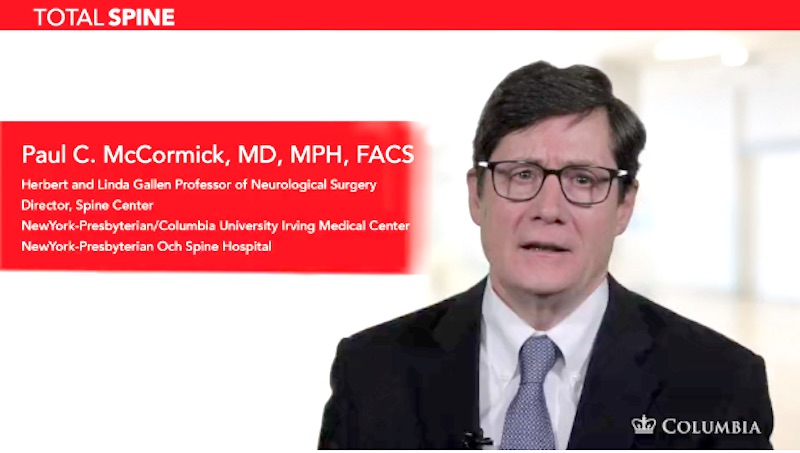| Header | Text |
| Summary | Burst = to break forcefully apart
Fracture = a break in a bone
A burst fracture is an injury in which the vertebra, the primary bone of the spine, breaks in multiple directions.
The bones of the spine have two main sections. The vertebral arch is a ring-shaped section that forms the roof of the spinal canal and protects the spinal cord. You can feel the spinous process, a projection from this arch, when you press on the skin in the middle of your back. The vertebral body is the cylindrical shaped portion of the vertebral bone that lies in front and provides the majority of structural support. In a burst fracture, the vertebral body shatters.
A burst fracture usually results from significant trauma that compresses the bone, such as a motor vehicle accident or a severe fall. Burst fractures account for 14% of all spinal injuries.
There are a number of different classification schemes to describe burst fracture and help direct their treatment. In general, a burst fracture represents a serious problem, since the vertebral body shatters with enough force to separate the bone fragments and compromise the vertebra’s ability to support the spine. Bone fragments can also be displaced into the spinal canal or foramen (exit route for an individual nerve root), leading to pressure on the nerves and compromised function. Potential for a spinal cord injury is high. Burst fractures require immediate attention and treatment to prevent or minimize injury to the spinal cord.
As a result of the impaired mechanical strength following a burst fracture, the spine may develop an abnormal angulation that can lead to pain or further neurological compromise. Following a burst fracture, the vertebrae collapse in the front more often than in the back, and develop a wedge shape. When this occurs, the spine will tip forward and develop a deformity known as kyphosis. If severe, this deformity will progress over time unless surgically corrected.
|
| Symptoms | A burst fracture may cause the following symptoms:
- Moderate to severe back pain that is worse with movement
- Numbness, tingling and weakness
- Loss of bowel or bladder control
|
| Causes and Risk Factors | Burst fractures in a healthy spine are caused by major trauma, such as a motor vehicle accident or a severe fall. Occasionally, burst fractures may occur after minor trauma in a spine that is already weakened by conditions like osteoporosis or a tumor. (See pathologic fracture).
|
| Tests and Diagnosis | When burst fractures are a result of major trauma, they are usually found as part of a patient’s evaluation in the emergency department of a hospital or medical center. Doctors will need to know how the injury occurred and will perform a comprehensive neurological determine whether deficits exist.
The doctor may also order the following tests to confirm a diagnosis.
- X-ray (also known as plain films) –test that uses invisible electromagnetic energy beams (X-rays) to produce images of bones. Soft tissue structures such as the spinal cord, spinal nerves, the disc and ligaments are usually not seen on X-rays, nor on most tumors, vascular malformations, or cysts. X-rays provide an overall assessment of the bone anatomy as well as the curvature and alignment of the vertebral column. Spinal dislocation or slippage (also known as spondylolisthesis), kyphosis, scoliosis, as well as local and overall spine balance can be assessed with X-rays. Specific bony abnormalities such as bone spurs, disc space narrowing, vertebral body fracture, collapse or erosion can also be identified on plain film X-rays. Dynamic, or flexion/extension X-rays (X-rays that show the spine in motion) may be obtained to see if there is any abnormal or excessive movement or instability in the spine at the affected levels.
- Computed tomography (CT Scan)— a diagnostic imaging procedure that uses a combination of X-rays and computer technology to produce detailed images of any part of the body, including the bones, muscles, fat, and organs. CT scans are more detailed than general X-rays.
- Magnetic resonance imaging (MRI) — a diagnostic procedure that uses a combination of large magnets, radiofrequencies, and a computer to produce detailed images of organs and structures within the body. MRIs can give an accurate picture of the spinal cord.
|
| Treatments | A burst fracture is a serious injury; it typically requires immediate hospitalization and treatment.
If the burst fracture is not severe, i.e. has not led to neurological and/or structural compromise, then the doctor may initiate a nonoperative approach. However, surgery is required if the burst fracture has significantly impaired the mechanical strength of the spine or causes compression of the spinal cord or nerves, leading to neurological deficits.
The treatment must always be specifically tailored to the patient’s presentation; the choice of procedure will depend on several factors. The surgeon may remove a specific bone that is compressing the spinal cord and nearby nerve roots, which is referred to as a decompression surgery. This surgery relieves the pressure on the spinal cord and nerves by removing the lamina, a procedure known as a laminectomy, or by removing the vertebral body, a procedure known as a corpectomy.
The surgeon is also often required to re-establish the strength of the spine through a spinal fixation and fusion. In these procedures, the surgeon places grafting material in the required space that allows the bones to fuse together. The surgeon also typically inserts implants, such as screws and rods, to hold the spine in place while the bone fuses.
|
| Preparing for Your Appointment | Drs. Paul C. McCormick, Michael G. Kaiser, Peter D. Angevine, Alfred T. Ogden, Christopher E. Mandigo, Alexander Tuchman and Richard C.E. Anderson (Pediatric) are experts in treating burst fractures. They can also offer you a second opinion.
|


